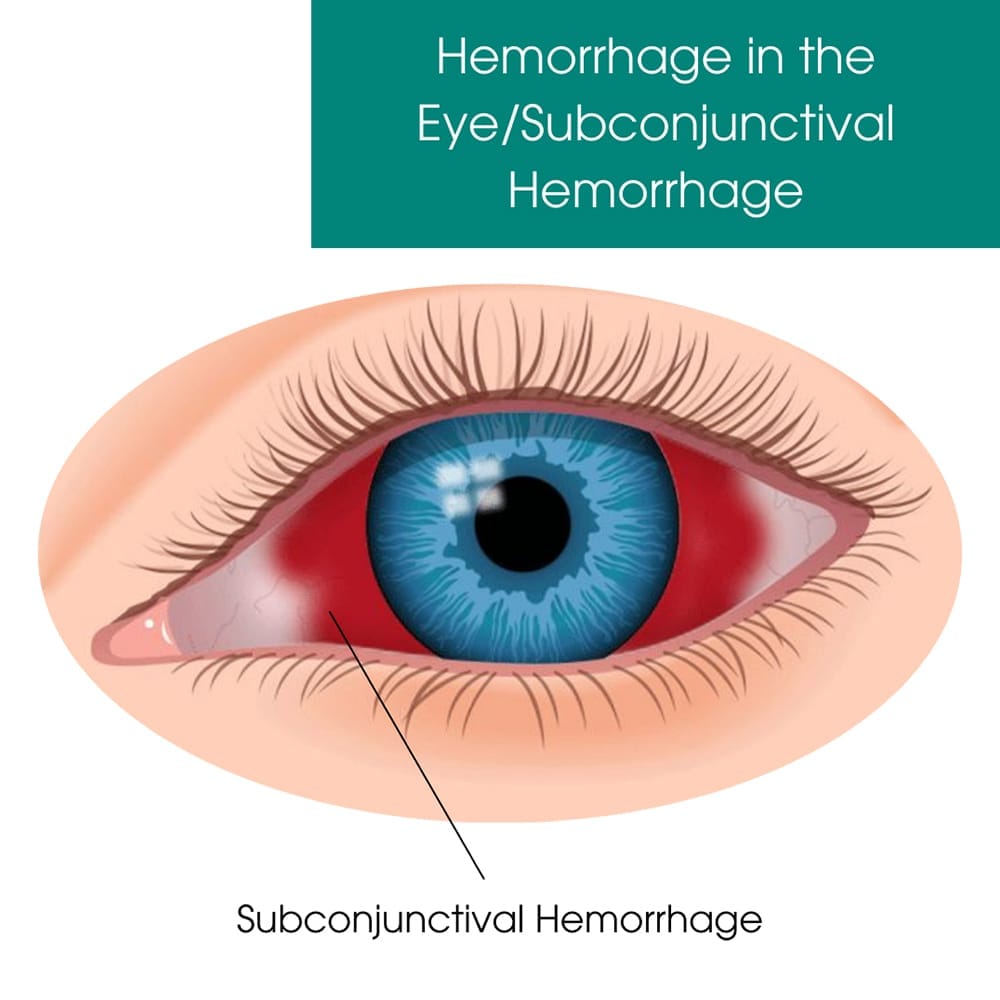 Subconjunctival hemorrhage is when you see red in the eyes. The conjunctiva or the white part of the eye has many small blood vessels. When these burst, the blood leaks out and pools, causing a red patch or spot.
Subconjunctival hemorrhage is when you see red in the eyes. The conjunctiva or the white part of the eye has many small blood vessels. When these burst, the blood leaks out and pools, causing a red patch or spot.
Most hemorrhages in the eye develop spontaneously or are caused by trauma. Getting your eyes checked by optometrists in Downtown Manhattan for a checkup or for emergency eye care is the surest way to find out if you need treatment for eye hemorrhage issues. Eye Physicians in NYC provide you with accurate diagnoses and effective treatment for subconjunctival hemorrhage and a host of other eye conditions ranging from ocular rosacea and pink eye to lazy eye and styes.
There could be several reasons for your red eye. If you get a direct hit to the eye, the trauma may have caused some veins to burst. Within 12 to 24 hours, you see the noticeable red eye for which you need treatment for subconjunctival hemorrhage.
You may also see some redness during the post-operative stage of a recent eye surgery like intraocular lens implants, cataract surgery, filtration surgery or stye surgery.
Certain eye conditions also make you vulnerable to subconjunctival hemorrhage, such as:
Most people tend to rub irritated eyes, but this movement could be rough and cause trauma leading to hemorrhage in the eye.
Spontaneous subconjunctival hemorrhage occurs due to a sudden surge of pressure in the blood vessels caused by reasons such as:
For adults, hemorrhage in the eye isn’t a rarity. You may see red eyes at any age, but those between 60 to 80 years of age are more vulnerable. As you age, you tend to lose the elastic properties of the blood vessels, making them easily breakable at the slightest pressure.
In children, cases of hemorrhage in the eye are just under 0.5 percent, so you do need an immediate pediatric eye exam by your NYC pediatric ophthalmologist. Most causes of red eye in children are trauma induced, severe conjunctivitis and to a lesser degree ocular surface disease. Even babies get red eye, mostly due to trauma caused by a difficult delivery.
Other high-risk factors for subconjunctival hemorrhage include:
The bright red spot is the telltale sign for hemorrhage in the eye. Besides this, however, you may not experience any other symptoms. You may not even feel you have any hemorrhage until you see yourself in the mirror or someone talks to you about your eyes.
The feeling of gritty eyes or that there is something foreign in your eye is common.
If you develop hemorrhage in the eye on a regular basis that’s unrelated to specific trauma, your NYC ophthalmologist may try a couple of different tests to understand the reason behind the frequent occurrences of red eye such as:
Read more: Retinal Photocoagulation
There is no fast cure for subconjunctival hemorrhage, even though the condition is common. The best treatment for eye hemorrhage is time. The blood from the burst blood vessels is usually absorbed by the body, but the rate of this absorption depends on the size of the red patch or spot. In most cases, the hemorrhage in the eye disappears in two weeks.
As your eyes heal, you start noticing the red spot changing colors. From blood red, it usually turns brown or bluish black and then yellow, just like a normal bruise. Finally, you may notice a pink tinge on the conjunctiva before the white returns. You may also be given artificial tears to soothe eye irritations.
Prevention is difficult as you never know what may cause your blood vessels in the eyes to rupture.
You can, however, take steps to minimize the risks, such as:
For more information about hemorrhaging in the eyes and how to treat subconjunctival hemorrhage, contact Eye Physicians in Downtown Manhattan. They have the latest tools and technology to provide you with an accurate diagnosis and the best treatment for subconjunctival hemorrhage for you and your family. And they always do their best to get you in and out of the office in under an hour.
Eye Physicians
110 Lafayette St, Suite 503
New York, NY 10013
(212) 292-4814
Entrust the care of your precious eyesight to highly skilled and experienced eye care professionals. For top-notch ophthalmologists and optometrists in Downtown Manhattan, choose Eye Physicians. Eye Physicians ensures prompt care, precise diagnosis, and personalized treatment plans.
Schedule an Appointment